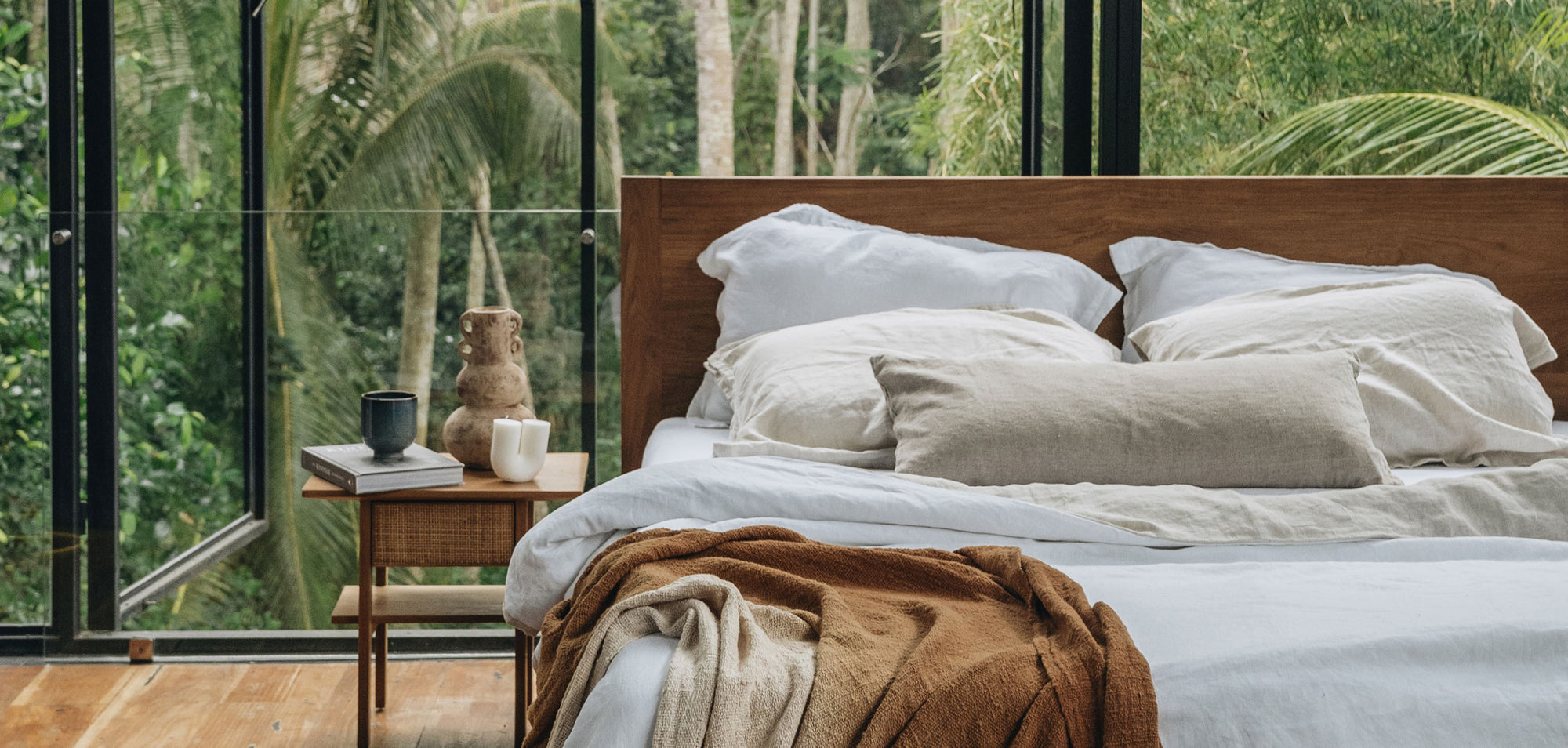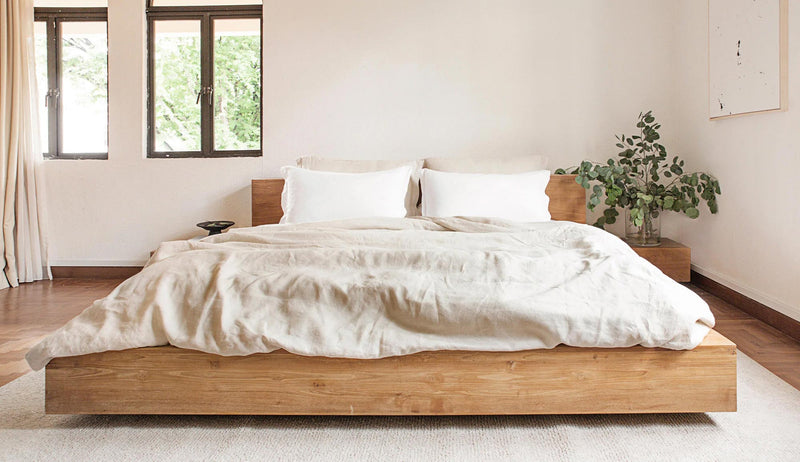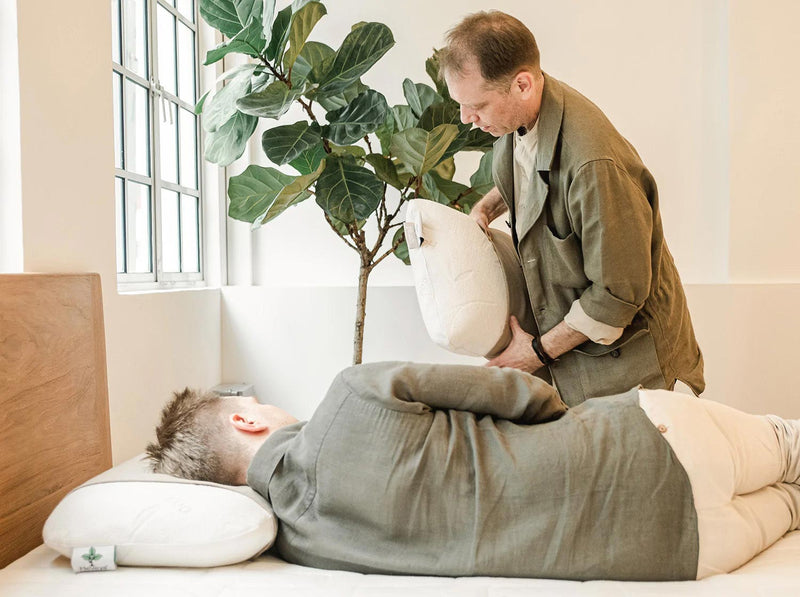When it comes to bedding, there is a great variety of materials to choose from. From bamboo (natural materials) to polyester (synthetics) and plenty in between, it can be somewhat confusing and hard to decide. But how to choose the materials that are right for you to provide the most comfortable sleep possible?
You will want to consider the following aspects - Do you sleep hot or cold? Do you like a clean neat look or a comfortable mess to fall asleep in? Do you like a silky smooth or a rougher texture? Do you usually iron your bedding? Before considering your next bedding purchase, go through our extensive guide below!
Below are the more common bedding materials and terms used. This is by no means an exhaustive list, but it’s a great start to better understanding materials used and options available. Grab a cup of your favourite tea and let’s begin.
It’s what’s on the inside that counts!

COTTON
Being naturally soft and breathable, cotton is arguably the most popular choice for bedding materials. Cotton fabric is made from the cotton plant. To create high-quality cotton yarn, the cotton balls are processed many times to remove the long fibres from the short fibres, as well as unusable fibres, foreign debris and other trash.
What are the benefits of using cotton?
- Easy to wash & care for;
- Soft, comfortable and breathable;
- All-natural;
What are the disadvantages of using cotton?
- Wrinkles easily;
- Cheap sheets deteriorate really quickly;
- Not the most sustainable choice, as cotton is a thirsty crop, and cultivation of it uses a lot of chemicals & water;

LINEN
Linen is a fabric made from the flax plant , one of the most sustainable materials in the world. Flax is cultivated throughout the world and can grow in any environment. However, high-quality linen comes from Belgium, France, and the Netherlands as their climate is best suited for flax. The process to make linen is one where they separate the long fibres from the short fibres as the long fibres are used to make the finest linen. (The short fibres are not discarded, they are used to make durable materials like canvas.) Once the long fibres are spun into yarn and carefully scrutinized for quality, they are ready to be made into fine linen.
French Linen, European Linen, and Belgium Linen
Same as above, but French Linen, Belgium Linen, and European Linen all refer to where in the world the flax plant was grown and processed. For example, French Linen is grown and made in France. Contrast that with French Flax Linen which is linen that was grown in France yet is processed outside France.
What are the benefits of using linen?
- Extremely breathable and temperature regulating;
- Very absorbent and dry;
- Naturally hypoallergenic, antimicrobial & antibacterial;
- Supple and get even softer with each wash;
- Durable and easy to care for;
What are the disadvantages of using linen?
- Higher price point compared to cotton;
- Initially thick, coarser feeling;
- Wrinkles easily (but some like that beautiful textured look!)

SILK
Considered to be the most luxurious and delicate material for bedding, silk is made from harvesting and processing cocoons from a large variety of insects. The most prized silk comes from the cocoons spun by the domestic silkmoth. They are fed a steady (and large) diet of mulberry leaves until they make a cocoon.
Once their cocoon is complete, the silkworms are killed by boiling or steaming it alive. Why? The boiling step also blunts a natural chemical substance known as sericin, which otherwise would cause the cocoons to harden, resulting in a fabric that’s not as soft. These cocoons are made from a single strand of silk and are carefully processed to unravel the thread into individual long stands before being spun into yarn.
What are the benefits of using silk?
- Breathable and temperature regulating;
- Anti-wrinkle;
- Strong and lightweight;
- Luxuriously soft;
What are the disadvantages of using silk?
- One of the most expensive fabrics in the world;
- Not animal friendly;
- Difficult to care for; best is hand washing;

BAMBOO LYOCELL
Bamboo fibre is made from the pulp of bamboo. The pulp is crushed, washed, and then spun into yarn which is used to make bamboo fabric. However, bamboo fabric is not all created the same . For Heveya®’s bamboo bedding, we chose the most environmentally-friendly method. This bamboo lyocell manufacturing technique uses a closed-loop process, meaning that almost 99% of the solvent and water used to manufacture the lyocell is captured and reused. This process is very eco-friendly, results in way less leftover material, and is friendly to the environment.
What are the benefits of using bamboo lyocell?
- Eco-friendly;
- Cooling: extremely breathable & temperature regulating;
- Silky soft and drapes beautifully;
- Naturally hypoallergenic, antimicrobial & antibacterial;
What are the disadvantages of using bamboo lyocell?
- Higher price point compared to cotton;
- Different kinds of bamboo fibre on the market, leading to some confusion (we use bamboo lyocell only);
- Natural materials might be more delicate and cause initial pilling;

TENCEL™
Tencel™ is the brand name for Lenzing AG’s range of semi-synthetic fibres including modal and lyocell. You can find Tencel™ banded fibres and you will also find generic lyocell. So nowadays, when you hear tencel in the marketplace, it is a catch-all phrase and no longer specific to Lenzing AG. Similar to the way Photoshop is used to say “to edit an image” when Photoshop is an actual product made by Adobe.
These semi-synthetic fibres are manufactured using a process very similar to bamboo. The difference is that before it’s made into yarn, solvents are added to the eucalyptus tree pulp to make a wet mixture. This mixture is then pushed through a specialised filter forming long strands. These strands are further chemically treated before spun dry. Lastly, these dried fibres are chemically treated again depending on their final use.
What are the benefits of using Tencel™?
- Comfortable and soft;
- Excellent moisture management;
- Anti-bacterial;
What are the disadvantages of using Tencel™?
- Higher price point compared to cotton;
- Not as long-lasting or durable;
- Chemicals used can agitate sensitive people;

SYNTHETICS
Synthetic fabrics, in contrast to other natural fabrics covered, are man-made. The four most common synthetic fibres are nylon, polyester, acrylic and polyolefin. These are made using a variety of chemicals and production techniques to create fibres having various desirable benefits. Generally, synthetic fibres are mixed with another material, often cotton, to make inexpensive sheets.
What are the benefits of using synthetic bedding material?
- Cheaper;
- More durable than most natural fibres;
- Stretchy/waterproof depending on the chemical used;
What are the disadvantages of using synthetic fabrics?
- Breathability and durability depend on weave making them feel hot;
- More prone to pilling and static electricity;
- While water-resistant, they can soak up oils and grease leading to staining;
- Chemicals used can irritate the skin leading to rashes and itchiness;
After understanding the different materials available, let’s go over other frequently used bedding terms.
THREAD COUNT
Thread count is the measurement of how many threads there are in one square inch.
For example, if you have a cotton sheet that has 200 threads lengthwise and 200 threads width-wise, the thread count is 400. In general “standard quality” sheets are around 150 TC and higher while “high quality” sheets usually are around 180 TC and higher.
Some marketing gimmicks report a much higher thread count by using thread made up of two or three smaller threads, doubling or even tripling the thread count. In the example above, 200 threads in both width and length, with each thread made of up three smaller threads will be counted as being 600 width and 600 length for a total of 1,200 thread count. With synthetics, many manufacturers are making such incredibly thin fibres for the sole purpose of increasing thread count into the 1000s. So Buyer Beware - higher thread count doesn’t always mean higher quality, just higher cost.
BED LINEN VS BED SHEET
Many times you hear people use bed linen and bed sheets interchangeably, referring to all the items used to make the bed amazing and aesthetically pleasing. So, you might be wondering, what is the difference between bed linen and bed sheets? Or, is there a real difference between bed linen and bed sheets? Simply put, yes.
Bed linen is the collective term for the various pieces of cloth that are used to make up a bed - fitted sheet, flat sheet, duvet covers and pillowcases. While a bed sheet comes in two forms - a flat sheet and a fitted sheet. Therefore, a bed sheet is just one item in a bed linen set.
Now, let’s go over the different types of sheets and covers in a bed linen set.

FLAT SHEET
A flat sheet is a flat piece of fabric used either as a mattress cover (instead of using a fitted sheet) with the edges being tucked in under the mattress, or used as a top sheet in between you and the quilt, duvet, or comforter. Some folks even use a flat sheet as a blanket instead.
If you do use a flat sheet as a mattress cover, be sure to buy a piece that is big enough to tuck under the mattress so it does not come out too easily. Alternatively, you can use elastic bands that clip to the corners and tuck this under the mattress, mimicking a fitted sheet.
FITTED SHEET
Similar to a flat sheet, a fitted sheet is used to cover and protect the mattress. Designed to fit the mattress size, it has elastic along its edges and is used to cover the mattress snugly and securely. Making a bed with a fitted sheet takes less time than with a flat sheet. It provides a nice, smooth surface on which to sleep.
DUVET COVER
A duvet cover is a removable piece of fabric that holds your duvet insert in place. Think of it like a pillowcase where the duvet is the pillow and the duvet cover is the pillowcase. Many high-quality duvets and duvet covers will, at their corners, have a loop and tie strings. After tying these together, the duvet insert will stay in place and won’t wander when you move the duvet cover. Duvet covers are placed on top of the bed. As such, you can be creative with bold designs and colours, making a personal statement on your bedroom’s decor.
What about blankets & warmers?

DUVET
A duvet is a type of bed cover that is filled with a natural or synthetic filling. Depending on the weight of the duvet, they can be a light summer duvet providing a great amount of comfort and some warmth for when you turn the AC on. A winter or heavy-weighted duvet has more material that traps your body heat keeping you nice and warm. Choosing the right duvet for your sleep habits and climate is important to ensure you sleep comfortably.
While those with a British background will almost always talk about the duvets on their beds, Aussies are more likely to refer to their doona. Both terms ultimately derive from the same word, “down”, referring to a bird’s feathers. At Heveya®, we carry a down-alternative duvet that is made of organic cotton cover and bamboo lyocell padding, a sustainable and animal-friendly choice!
COMFORTER
A comforter is a thick fluffy top cover (the shell) made from two pieces of cloth and filled with natural or synthetic filling. Comforters are quilted to prevent the filling from moving around. Sometimes comforters are referred to as a “bed in a bag”.
A comforter and a duvet are similar as both are top covers. However, unlike a duvet, a comforter is one piece while a duvet and the removable duvet cover are two pieces. This makes a comforter a bit easier to use, but for versatility and variety, a duvet allows you to buy different duvet covers without needing to buy another insert.
QUILT
A quilt is a top cover for the bed similar to that of the duvet and comforter. However, it is thinner and denser, resulting in a heavier feel on your body. It can be used layered on top of a flat sheet or a blanket.
Quilts are made of three layers - a top layer, a middle filling or batting and a bottom layer. The top layer can be bold, colourful, and have a variety of designs, usually sewn together from many pieces of fabric patterns creating a complex yet beautiful pattern. The batting is typically made of wool or cotton, but can be synthetics or blends depending on the quilter's preference. The bottom layer is a soft piece of fabric that is a solid colour and accentuates the design of the top layer. You will see this when you fold back the quilt at the head of the bed.
BLANKET
Generally, people use the term “blanket” to refer to any bed covering thicker than a sheet, including quilts, duvets and comforters. A blanket is a piece of thick cloth large enough to cover your bed and your body when sleeping (or even taking a power nap). In hotels, you will see a blanket sandwiched between a flat sheet and another layer of sheet.
Blankets are made to trap radiant body heat keeping you warm. Blankets come in a variety of weight and materials. You can even consider buying a blanket a bit larger than needed so when the edges hang over, they form a nice skirting around the bed. Additionally, many people will buy a second lightweight blanket and keep it folded up nicely and place it at the foot of the bed as an accent. They also will keep your feet warm!

CERTIFICATIONS
When shopping for bedding that fits your green, eco-friendly lifestyle or you just want to minimize your impact on the environment with your purchase, you need to be sure that you are buying from the right company that holds the same values as you do. Sadly, too many companies greenwash themselves by claiming they are friendly with terms and phrases that mean nothing, but sound impressive and inspiring trust. This greenwashing makes it difficult to really identify who to buy from. That is why we have our products certified by internationally recognised certification bodies. We also only work together with like-minded suppliers that fully comply with Heveya®’s norms to bring the most natural sleeping environment to our customers, this in terms of QC, recycling, reducing wastage & becoming Carbon-Neutral.
Our Heveya® bamboo lyocell and flax linen sheets are certified with the following:
- WRAP: The manufacturer promotes a safe, lawful and ethical practice for its workers.
- ECO STANDARD: The plantations are considered organic as they are not using harmful chemicals.
- OEKO-TEX 100 Class-1: The sheets are safe from harmful chemicals and safe to be used even for babies.
Our Heveya® organic duvets and mattress protectors are certified with the following:
- GOTS: The cotton cover is certified organic.
- OEKO-TEX 100 Class 1: The duvet and protectors are safe from harmful chemicals and safe to be used even for babies.
- Down-feather alternative
It looks like a lot to consider when buying bedding, and honestly, this is just the beginning. Check out our mattress buying guide - to say goodbye to back, neck, and shoulder pains in the morning. You need something just as amazing to put our bedding products on.
If you think about it, all we really want is a good night’s sleep so we can be at our best tomorrow. And the best way to do that is to buy bedding materials that are green, safe, comfortable, and help us sleep well.
So, what’s next? Come down to our showroom and try out our bedding for yourself. We’ll even serve the tea.










